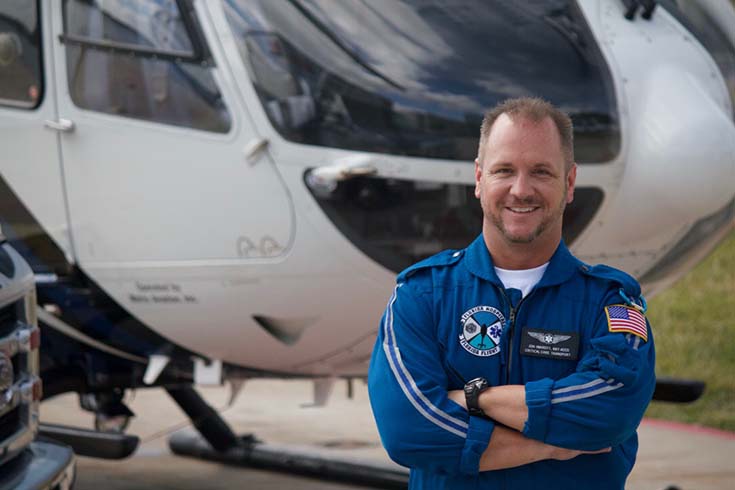
My life as a respiratory therapist began to take shape in 1989, when a best friend of mine introduced me to his father, an RT who lived and practiced in New Orleans, LA. I did some research on the profession and it seemed like I would enjoy it! It was a given that I was going to be in respiratory care, but to what extent remained to be determined.
My interest in transport can probably be traced back to my childhood. When I was a kid, I would have my grandfather take me to the airport to watch planes land and take-off and I was enthralled by it. So when I finished college, I wanted to combine the two things I loved most — my respiratory career and flying. However, I ended up carving out my niche in the adult critical care world, so finding the opportunity to be involved with critical care transport was going to be a challenge. Neo-peds RTs were a fixture on transport teams, but adult based teams that included a full-time RT were a rarity.
Critical Care Transport – Just You And Your Partner
Fast forward 22 years and I found that opportunity here with the Florida Flight 1 program at Florida Hospital Orlando. Our crew configuration is an RN/RRT on every flight and has been that way since this program’s inception in 1985. We do not perform scene or trauma calls but strictly inter-facility critical care transports, completing over 750 missions annually.
The differences between the ICU and air transport lie in the confined space and rapid thought and decision-making processes necessary during transport. You don’t have other folks to call when you’re 1500 feet in the air, whether it’s for eight minutes or 60 minutes. It’s just you and your partner. The approach you take for each individual patient and the plan you devise for that transport can make or break what that patient outcome will be.
A typical day starts at 6:15 in the morning with a shift change checkout of the aircraft with the off going team. We then have a daily safety briefing with our pilot, mechanic, dispatcher, and neo and peds teams. Our downtime consists of patient follow-up, education, flight QAs (where we critique the performance of other team members on their flights), and sometimes helping out in the ER.
My training consisted of 22 years of experience, medical director interviews, panel interviews, a three-month orientation process with multiple “mock calls,” timed scenarios, protocol memorization, and a preceptor’s observation. It all ultimately led to my spot on this incredible team!
No Matter What It Takes
It’s hard to pinpoint one particular call as the one that sticks out the most in my mind. I have been a part of a few in-flight emergencies that presented the ultimate challenge for two people. Compressions, airway control, medication delivery, and if called for, defibrillation — all of this is going on in sync. It’s pretty incredible.
Probably the most rewarding part of the job is the successful patient outcomes. I enjoy the challenge of getting the sickest of the sick and knowing that we will get them to a place where they can get the definitive care they need, no matter what it takes.
If you find yourself wanting to pursue a position in critical care transport, know that it is a different world than the ICU. Yes, we are a mobile ICU, but there are limited resources. Attributes to have are critical care experience, critical care skills (ACLS/PALS/NRP/ACCS/NPS, depending on whether you’re doing adult or neo-peds), critical thinking and decision-making skills, professional involvement (societies, committees, councils, etc.), nonstop education, no fear of heights, and an unrelenting passion for your job.
I love going home but can’t wait to come back the next day. That’s what it’s all about.
Jon Inkrott is a flight respiratory therapist with Florida Flight 1 at Florida Hospital-Orlando in Orlando, FL.
Want to network with other AARC members who are working in the transport field or interested in joining it? Join our Surface & Air Transport Section!





